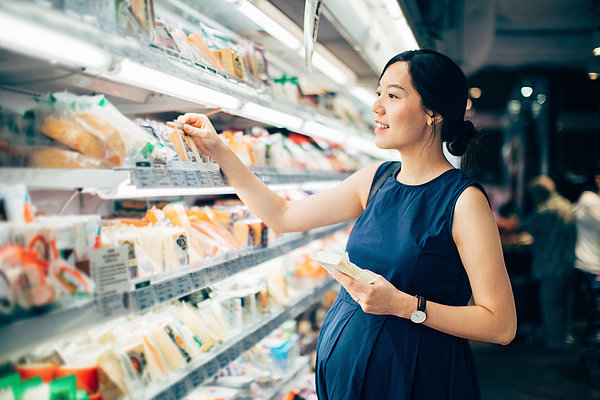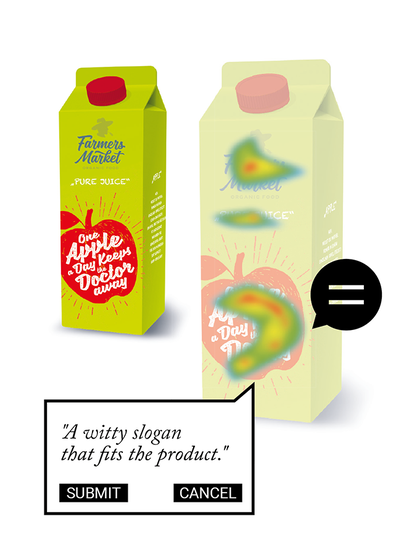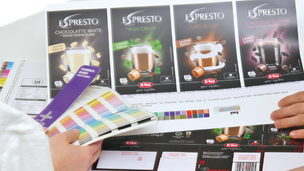
Testing the waters! How consumers help to design packaging – joint design verification by Linked2Brands and Psyma.
Most people don’t decide what to buy until they are in the shop. That’s why the appearance of the packaging is important. But even if the products live up to what the brand promises, how do manufacturers know whether their products will appeal to consumers. Why not simply ask the consumers themselves?
Back in 1984, when Helmut Thoma launched Germany’s first privately owned TV station RTL, he knew something that is even truer today:

"The bait has to taste good to the fish, not the fisherman." That’s how the witty Austrian made successful television; and that’s how companies create brands today. Never were consumers more powerful than they are now: the world wide web has put them in a position to check a brand’s claims themselves in a matter of seconds, to take a critical stance and thus to put even major companies on the defensive. Whether it’s Nestlé, Deutsche Bahn or the ING bank, they can all confirm this from bitter experience. At the same time, some brands experience hypes that go way beyond any kind of rationality – when people celebrate their favourite brands on social media, for instance, and share their experiences with others. Nike is a good example, having managed to harness the emotions of a whole nation with its campaign for the Trump-critical American football player Colin Kaepernick. Human exchange and dialogue is where brands emerge in the fi rst place and also where they become established and change. Companies are thus well advised to keep their ears to the ground and join in the conversation. A process that takes some effort but one that is also refreshingly democratic.
Surveying the market
In this context, dialogue with the consumer conducted via good, old-fashioned market research has suddenly come back into vogue. Marketing people now need to engage in such dialogues before even beginning to market a product.
After an initial large-scale market research project, a lot of time generally passes before the final product is launched. The market changes quickly and the competition doesn’t sleep but is busy bringing out new products that didn’t even exist when the original market research was done." Experts therefore recommend a crosscheck before the final market launch: Do consumers understand the new product? Would they buy it?
This is where Linked2Brands’ extensive experience comes in, offering a way for brands to raise their future chances of successful product placement and at the same time reduce the risk of expensive launches that turn out to be fl ops. The concept is the result of a cooperation with the private Nuremberg-based market research institute Psyma, a company with bureaus all over the world – thirteen all told – including in China, the United States, Brazil and Mexico.
The ideal-case scenario goes something like this: Once Linked2Brands has completed the brand design development or adaptation together with the client – embracing the whole range of components from graphics, images, text and logos to brand and assortment colours – the final artwork is created so print tools can be used later on. In many cases, however, there are several different
design options for a brand new product or a product relaunch. Here the marketing people are suddenly spoilt for choice and have to make a decision. One design may seem more attractive or more promising than another, but is it really? Why not let the consumer make the choice, right from the start?
For this purpose Linked2Brands joined forces with Psyma to create a tool that is extremely simple: depending on what the client wants, the market research institute can have the design verifi ed by a so-called online access panel consisting of up to 300 women and men aged between sixteen and sixty-five from the target user group. The panel are given two or three design options to choose from: the old and the new packaging, say, or the new design, the old design and the design of a competitor.

The consumers decide via mouse click which of the design options they find the most convincing, using criteria such as appearance, brand compatibility, product features and overall appeal compared with the design of a competitor and how motivated they are to purchase the product. Psyma and Linked2Brands agree on the questions together with their clients in advance. Thus, for example, the question for a brand of apple juice called "Your Garden" developed especially for marketing purposes and produced by the fictitious company "Farmers Market, Eger & Cie" is: "Which packaging design appeals to you most?" The questionnaire is largely standardised, even though open questions are possible. In this way, the client’s designs can be easily compared and they save costs too.
Then there are the extras, such as the option of adding a "Heat Map" – so called because the test subjects are asked to click on elements that they spontaneously react to either positively or negatively. The programmed algorithm uses the results to generate a kind of thermal map – rather like environmental brochures for building insulation that show where in a house the most heat accumulates, or in our case which parts of the design have a particularly positive or negative impact. Each click opens a dialogue box where the participants can enter their evaluation. In this way, the market research experts find out not only which aspects of the packaging are appealing, but also why they are evaluated as positive or negative. Taking the example of the apple juice again, the answers might be along the lines of "I like the picture of the farmer" or “Pure juice. The name already tells you what’s in it” or "A witty slogan that fits the product."
-
Being persuasive at the point of sale
One option is for the market researchers to place the selected designs on a virtual supermarket shelf but under real market conditions – i.e. positioned as they would be in reality and lined up next to a number of competing products. Anyone who knows that three out of four consumers do not make a purchase decision until they are in the shop standing in front of the shelf understands how important this is. Everything is at stake at the point of sale! Does my packaging reflect the brand values? Does it give the customer the brand experience? Is the brand tangible, even? And can it hold its own against the competition? This is where brands provide consumers with a point of orientation.
The online survey usually takes between five and ten minutes to complete depending on the level of detail the client has requested. About two and half weeks later, the results have been evaluated and a report has been issued, giving brand managers empirically sound and objective arguments for deciding how to optimise their design. Ideally, the revised version is then put through a new survey. Irrespective of current trends, the target group must recognise all the brand’s relevant facets and messages, as Vera Steger, Associate Director Consumer Research at Psyma, says. Fresh, bright colours make a product seem younger of course. And these days a lot of packaging has become much more minimalist and straightforward in response to consumer demand for organic and sustainable products. As a general rule, though: “Every product must tell its story in its own individual language, and in an emotionally and factually convincing manner that does justice to the brand.”
Clients also benefit from Linked2Brands’ experience in brand consistency. Thanks to Psyma, Janoschka’s production agency can now respond even better to consumer expectations. And that’s how it should be, because it’s the consumers who make the rules in corporate communication. Let’s be sure to put some really tasty bait on the hook.


